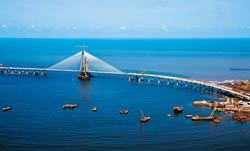Municipal mess

It’s a fairly common scene no matter what part of urban India you are in: it rains for a few hours and the city comes to a grinding halt. Waterlogged and potholed roads hold up traffic, backing up cars for miles.

By now, we know what’s wrong with our municipalities. Apart from being largely corrupt and sclerotic, they are caught up in a maze of rules and regulations that blur responsibilities. For example, state governments often have authority that supersedes that of the municipality, and politicians and bureaucrats often use that to their advantage.
Most municipalities are also broke. They just don’t have the money needed to create the sort of infrastructure their growing cities need. For example, in Haryana’s so-called “Millennium City”, few of the fancy apartments that sell for a few crores of rupees have municipal water connections.
Most of them make do with groundwater, which is fast depleting. The city of high-rises also has just a few fire tenders, and street lighting is scarce. The irony is that the state has earned thousands of crores of rupees from the real estate boom that has taken place in Gurgaon.
Also read |
Arguably one of the best-run municipalities in the country, the Surat municipality (the oldest in the country), has created a city development plan that looks as far ahead as 2031. It is already upgrading its infrastructure keeping in mind the growth in population in the years ahead.
Why can’t other municipalities follow Surat’s example? After all, what’s required is a hardcharging municipal commissioner who can rally the support not just of his political masters in the state but also other stakeholders in his or her city. Unless the municipalities learn to work within their systemic constraints, there’s little hope for our cities.










